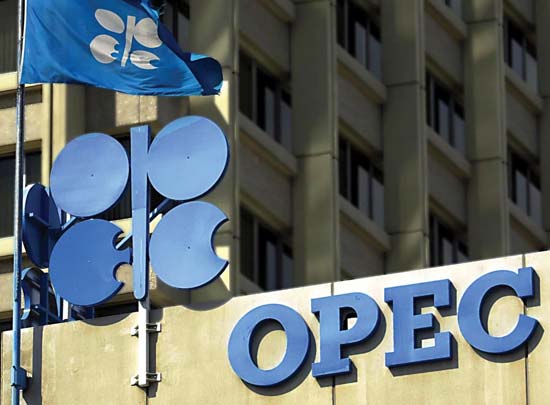Crude oil price Thursday dropped $1.24 a barrel to $52.72 before peaking at $53.76 as OPEC and non-OPEC member countries decided to extend cuts in oil output by nine months until March 2018.
While the global benchmark, Brent crude oil traded at $53.76, the US light crude traded at $51.16 per barrel.
Non-OPEC oil producers led by Russia agreed Thursday to join OPEC in extending production cuts for nine months until March 2018, Reuters quoted OPEC delegates as saying.
The combined cap on oil output for the OPEC and non-members was agreed at around 1.8 million barrels per day.
The next OPEC and non-OPEC meeting is scheduled for November 30, 2017, delegates said.
Reuters reported that the cuts are likely to be shared again by a dozen non-members led by top oil producer Russia, which reduced output in tandem with the oil cartel from January.
OPEC’s cuts have helped to push oil back above $50 a barrel this year, giving a fiscal boost to producers, many of which rely heavily on energy revenues and have had to burn through foreign-currency reserves to plug holes in their budgets.
Crude oil’s earlier price decline, which started in 2014, forced Russia and Saudi Arabia to tighten their belts and led to unrest in some producing countries including Venezuela and Nigeria.
The price rise this year has spurred growth in the U.S. shale industry, which is not participating in the output deal, thus slowing the market’s rebalancing with global crude stocks still near record highs.
OPEC oil ministers were continuing their discussions in Vienna as at press time Thursday after three hours of talks.
Non-OPEC producers were scheduled to meet OPEC later in the day.
In December, OPEC agreed its first production cuts in a decade and the first joint cuts with non-OPEC members, led by Russia in 15 years. The two sides decided to remove about 1.8 million barrels per day from the market in the first half of 2017, equal to 2 per cent of global production.
Despite the output cut, OPEC kept exports fairly stable in the first half of 2017 as its members sold oil from stocks.
The move kept global oil stockpiles near record highs, forcing OPEC first to suggest extending cuts by six months, but later proposing to prolong them by nine months and Russia offering an unusually long duration of 12 months.
“There have been suggestions (of deeper cuts), many member countries have indicated flexibility but … that won’t be necessary,” Saudi Energy Minister Khalid al-Falih said before the meeting.
Falih also said Saudi oil exports were set to decline steeply from June, thus helping to speed up market rebalancing.
OPEC sources have said meeting would highlight a need for long-term cooperation with non-OPEC producers.
The group could also send a message to the market that it will seek to curtail its oil exports.
“Russia has an upcoming election and Saudis have the Aramco share listing next year so they will indeed do whatever it takes to support oil prices,” said Gary Ross, head of global oil at PIRA Energy, a unit of S&P Global Platts.
OPEC has a self-imposed goal of bringing stocks down from a record high of 3 billion barrels to their five-year average of 2.7 billion.
“We have seen a substantial drawdown in inventories that will be accelerated,” Falih said. “Then, the fourth quarter will get us to where we want.”
Source: ThisDay










